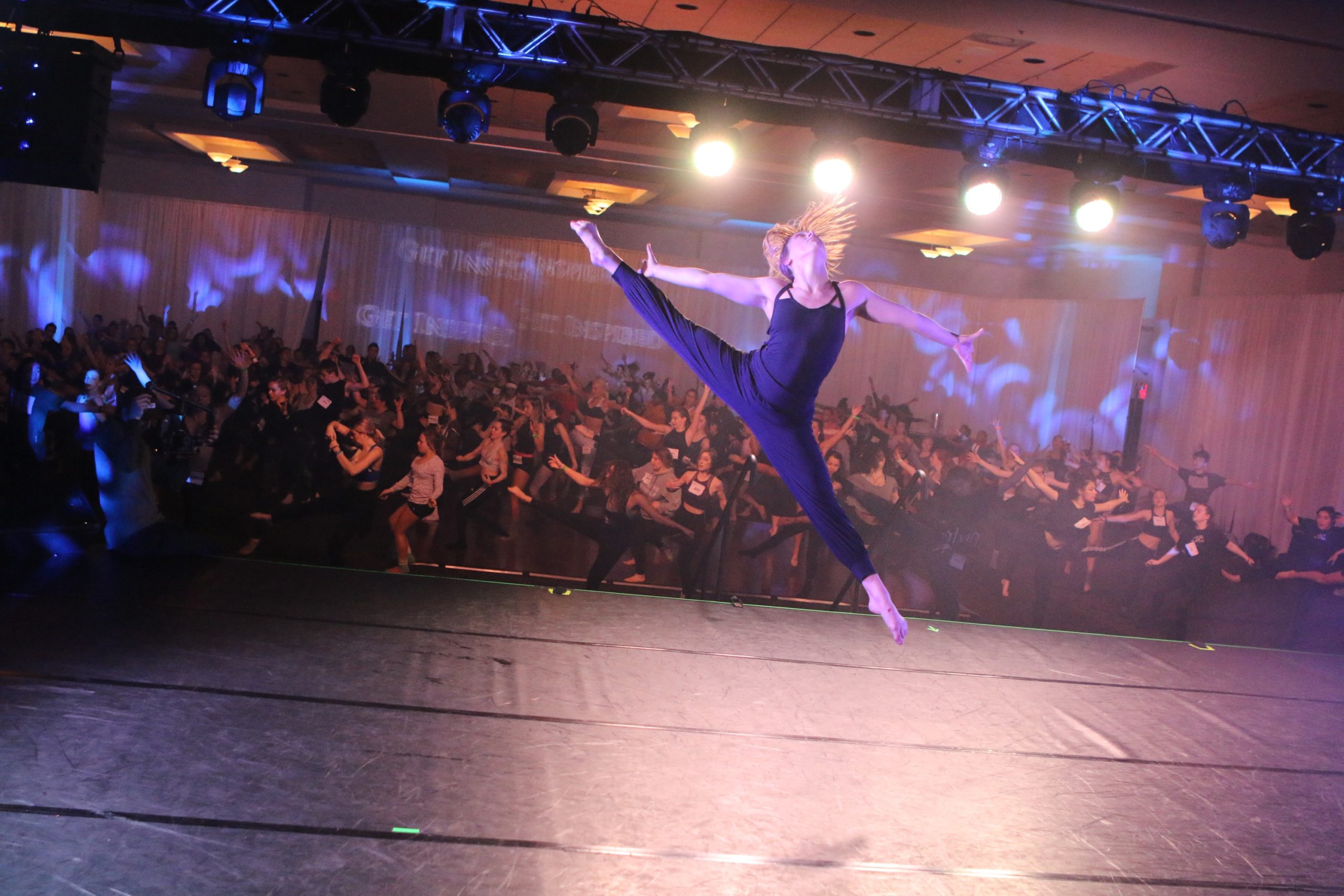
It’s impossible to look away from commercial dancer Hailee Payne when she takes the stage. Her powerhouse movement quality and joyful performances have led her to major success in the commercial industry—from appearing on “So You Think You Can Dance” to backing up today’s biggest pop stars—yet her background is less traditional than that of the average competition queen.
Payne started dancing at 4 years old with what she affectionately calls “look-cute-and-shake-your-booty classes.” From ages 6 to 11 she trained exclusively in hip hop and jazz at Elite Dance Force in Ogden, Utah. “We had all the power, but those biscuits were flying, and I needed technique,” she says. While at a local dance competition, Payne saw some uber-clean dancers from Infinity Dance perform and realized that was the way she wanted to train. Soon, she was enrolled at the school and finally studying ballet, contemporary, lyrical, ballroom and tap.
From there, her talent took off. At 16, she began touring as an assistant on Hollywood Connection, studying under industry greats like Bonnie Story and Brooke Lipton, and at 18 she booked her first professional job with the Salt Lake City–based Odyssey Dance Theatre. At 20, on her third attempt at auditioning for the show, Payne landed on “So You Think You Can Dance” Season 12. Her firecracker energy took her all the way to fourth place. “I would have been happy if I had gone home after the first week,” Payne says. “I was just so happy to have the opportunity to dance on the live show.”
Following the show’s 70-city tour, Payne moved to Los Angeles and in 2017 landed the Backstreet Boys: Larger Than Life residency in Las Vegas. “It was a dream come true to dance alongside the pop stars I grew up listening to,” she says. “Learning those iconic dance moves and performing them onstage was unreal.” She’s also danced with Taylor Swift at the American Music Awards, performed at the Soul Train Awards, and made appearances on hit television shows like “The Ellen DeGeneres Show” and “Lucifer”—while also teaching at conventions like NRG danceProject and studios around Los Angeles. As the pandemic hit, Payne was embarking on JoJo Siwa’s D.R.E.A.M. The Tour. But of course, after one glitter-filled performance, she had to pack up and go home for lockdown. “I was living my best unicorn dream,” Payne says. “I was sad it was cut short.”
In November, with less work to be had and self-tape auditions on the rise, Payne moved back to Utah, where she took up a regular teaching slot at Salt Lake City’s Millennium Dance Complex. She’s also substituting at various schools around the Salt Lake Valley. “When I moved to L.A., I never thought that I would be back in Utah after just five years,” she says. “But I’m not done performing. I’m just saving money on rent and traveling back and forth for opportunities that come up.”
Of course, Payne says she will have to be a bit more thoughtful about the gigs she pursues. “I’m used to saying yes to everything, but now I have to be a bit more picky.” Beyond teaching and traveling, Payne is putting an emphasis on virtual content. “I have the time to focus on creativity and choreography,” she says. “Whether it’s YouTube or TikTok, I’m stepping into it.”
Here, Payne opens up about the technique challenge she’s still working on, the worst advice she ever got as a student, and what she wants teachers to know about the professional dance world.
On her biggest technique hurdle:
“I tend to lose myself in the moment and sometimes let go of my technique. I didn’t start in ballet like most dancers these days—I started with the fire of hip hop and jazz—so I don’t have the best feet or turnout. When it comes to performances, I have to mark the technical elements backstage to feel where I need control and where I can let loose. I take calming breaths and really try to ground myself. I’m also a class monkey—I want to be dancing every day. So when I start to feel unstable in one of my genres, I will jump into class. If I’m needing a technique tune-up, I’ll take ballet. If I’m needing more strength or flexibility, I’m in a yoga class.”
What she’s focusing on in class:
“I’m always focusing on textures and dynamics. I’m a powerful dancer—I basically want to yell at you the whole time—so for me I’m thinking about how I can hold something out longer and softer before I spring into more momentous movements.”
On the biggest turning point of her training:
“When I made the studio switch to Infinity Dance. I know how difficult it is to lift your roots and switch studios, but for me it was what was best. To this day I thank my old director Misty Robbins for all my fire, but I needed the honing and technique I got at Infinity. Mandy Shaw, the director of Infinity, really rounded me out, not just as a dancer but as a person, too. I love my roots and where I have come from. Even now, I am always welcome there.”
The worst advice she’s ever received:
“I once heard a choreographer say, ‘You need to stop taking class—you don’t know how to dance anymore. All you know is how to do choreography for YouTube videos.’ I couldn’t understand why he would say it. Honing in on freestyle is good, but class is the best place to grow your dancing. No matter if you enjoy the teacher or not, there is always something to learn. I am a student first and always, and it makes me a better dancer, teacher and person.”
Her advice for teachers:
“Make sure your students know that being a pro dancer is possible for them. Kids often have diminished confidence because of social media. Many see dancers online getting tons of likes for doing extreme technique and think ‘I don’t look like that.’ They think that means a professional career won’t happen for them, but you just need to help them make it a reality. There is a place for every dancer in this world. People should know that outside of competition, I haven’t done one battement, pirouette or trick as a professional dancer. I’m here to entertain. So continue training your students in every style, and recognize that there is a place for them, whatever their unique strengths are.”




